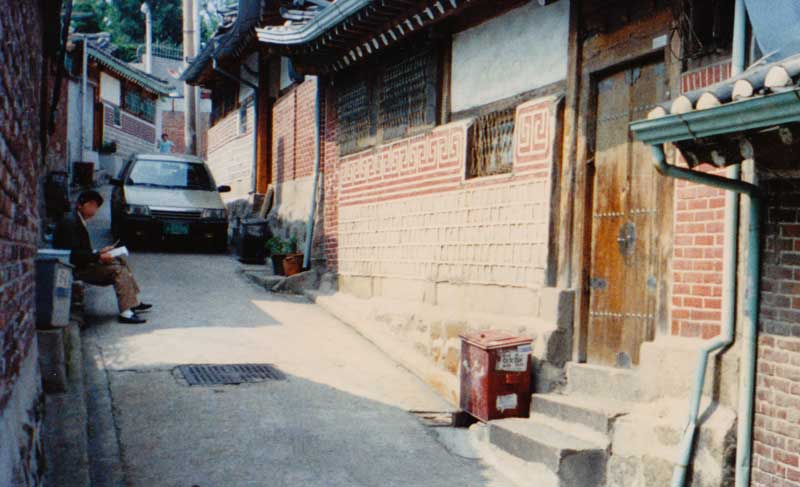 |
Kahoi-Dong 31-37 (Gahoe-dong 31-37) before demolition (click here for larger street scene) |
On March 10th 2006, we received an official letter stating that the local government authority had ordered construction work at Kahoi-Dong 31-37 to cease because they had determined that it was illegal.
Kahoi-Dong 31-37 is directly opposite our own house and, until recently the site was occupied by a hanok of a similar age to our own. This had been illegally demolished, and - when work was stopped - a new building was in the early stages of construction.
We had complained to the authorities about this. Our complaint obliged them to send an inspector to see
what was happening. This in turn led them to order that work be stopped, and also resulted in my spending a month in hospital (click here for details).
Similar letters were sent both from the Seoul Metropolitan Government and also the Chongro-gu District Office which is responsible for the Kahoi-Dong area.
What happened next?
The illegal construction work did in fact stop. But it re-started again in September 2006. The developer was required to pay a fine of KRW200,000 (about US$200) and go through the regular procedures for the approval of construction plans for a new building before work could recommence, this time quite legally.
As to the preservation status of the hanok that was demolished illegally, no mention was made. Contrast this with the UK, where a developer who illegally demolished an protected building would be required to re-build it, paying due attention to authentic use of materials and methods.
Protection Status ?
Kahoi-Dong 31-37 lies in the S1 preservation district of Bukchon where, according the the government, there was the highest concentration of traditional hanoks in good condition in north Seoul. The original hanok had been built during the 1920's using the traditional materials and architectural styles that had been commonly used during the closing years of the Choson era. Despite its age, the hanok remained in a structurally sound condition and had been home for Korean family throughout its life.
Click here for pictures of illegal construction work
Click here for a map showing the location of Kahoi-dong 31-37
![]()